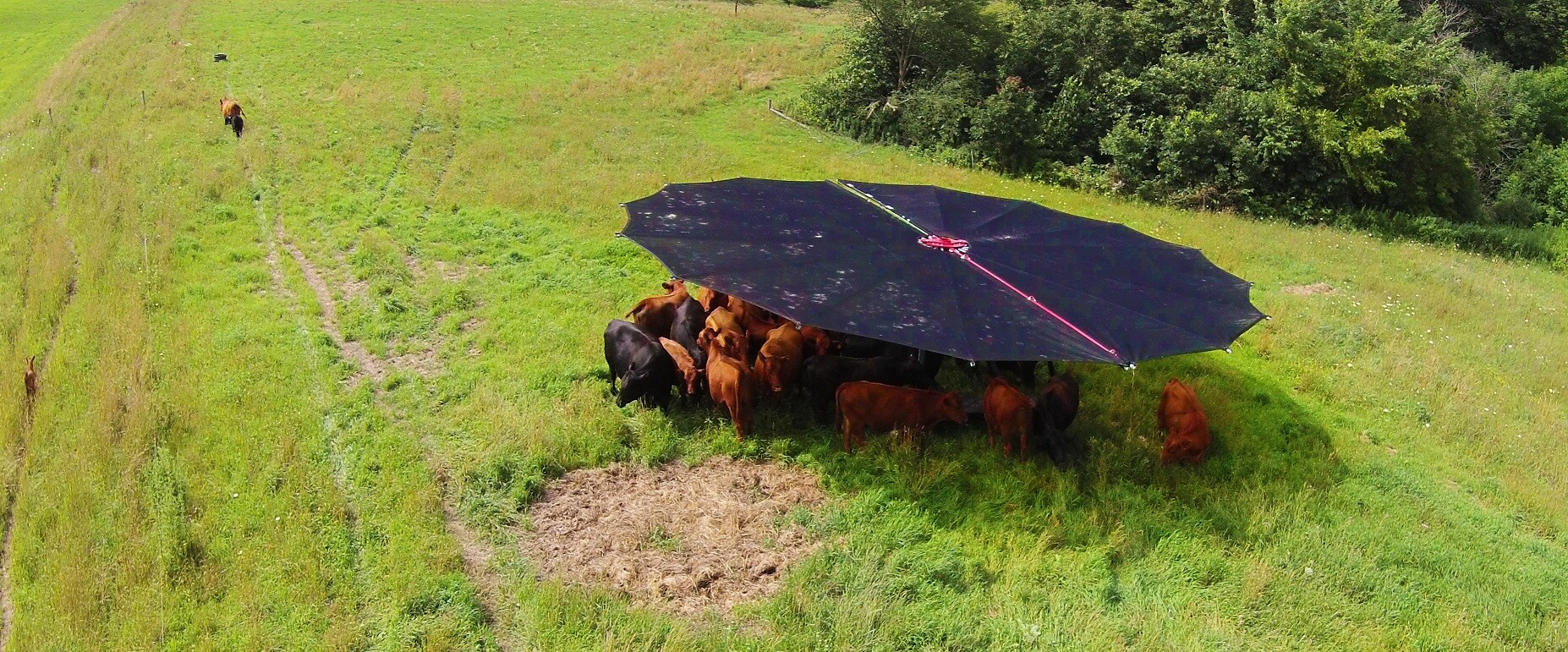“At the heart of rotational grazing is a replication of the way nature has formed an interaction between ruminants and plants – mainly grassland plants,” notes longtime Wisconsin beef farmer and rotational grazier Jim Munsch.
Munsch likens managed grazing of modern day cattle to the movement of their predecessors, the buffalo on the Great Plains or ruminants in Africa. “That structure involved a ruminant eating a plant off in one area and then moving on to another area where the plants were delicious and plentiful, allowing time for the initial plant that was eaten off to regrow.”
The movement and herding behavior was driven primarily by predators. Today electric fences replicate that effect. “We put animals in a herd on a small piece of land, have them eat the plants down so there is still leaf left, and then have them eat another piece, so the original piece can regrow.”
Allowing for regrowth is key to rotational grazing. In the spring in the upper Midwest, where Munsch grazes his beef, regrowth typically happens in about three weeks. In fall, it takes up to five weeks depending on moisture and length of daylight.
“With some grass and legume species, regrowth starts in 24 hours; therefore, it is best to move the cattle out of the eaten area, so they cannot graze on the immediate regrowth,” advises Munsch.
He aims for his animals to eat half of what is available and leave half to generate new growth and keep plants healthy. Manure distribution and hoof action also contribute to pasture health. Stock density for a healthy pasture on Munsch’s farm is approximately a pound of animal per square foot.
Tools for successful grazing
“Everything we do in terms of tools—fencing, water, shade— is to enhance that biological relationship between the plant and the animal,” notes Munsch.
Fencing – Managed grazing starts with a sturdy perimeter fence consisting of four to six strands of high-tensile or barbed wire. Next single-strand electric wire is used to form large paddocks within that area. Within those large paddocks, one to three days of grazing is enclosed with temporary fencing or polywire.
The size of those areas is determined by the number of animals and the amount of dry matter on the paddock. “A ruminant consumes about 2 ½ to 3% of their body weight daily in dry matter of the plants they consume,” explains Munsch. “You can estimate in a moderately thick stand, there are a couple hundred pounds of dry matter per acre of the sward eaten.”
Water – Providing access to water within each paddock differs for beef and dairy. While most dairy graziers rely on the cows drinking sufficient water in the barnyard, with beef, it’s a different story. “If you are a beef grazier, there is a large return on investment from animal gain if you can put water in each paddock,” says Munsch.
“Additionally, if you have water on the paddock, all of the nutrients the animals eat during the day will then be distributed there. So you have a better nutrient balance on the paddock.”
Shade – The Shade Haven mobile shade structure is a valuable tool for managed grazing. Before Shade Haven, graziers kept animals on paddocks that included trees on the hottest days. “That put a restraint on our ability to match animals to where the grass was best for them that day,” notes Munsch, who appreciates his ability to move the shade.
“With Shade Haven, on those blistering hot days, I can put shade on the paddock with the best grass for those animals for that day.”
Rotational grazing vs. continuous grazing
“When plants are eaten off in a managed system, they are eaten off when there is as much plant material below the ground as there is above the ground,” explains Munsch.
Roots draw nutrients and moisture from the soil, while above ground photosynthesis takes place. “When those solar panels—the leaves—are eaten off, there is a huge energy store in the root system, so the plant can regrow,” says Munsch.
With continuous grazing, the animals eat the tender regrowth almost immediately. “The plant’s defense mechanism is to reduce the amount of roots it has, because it wants a balance between the ability of the plant to get energy from the sun and the ability of the plant to get nutrients and moisture from the soil.”
Eventually those plants die and all that remains on the pasture are plant species that grow very close to the ground. “From a production standpoint, you dramatically reduce the yield of dry matter when you continually graze, because you are reducing the ability of the plant to grow,” says Munsch. “And it is dramatic. A managed pasture system, where you allow the plant to regrow, can yield twice as much dry matter.”
The increased yield allows twice as many animals to graze on higher quality forage, resulting in more rapid weight gain. “I joke with people that if a seed corn salesman came onto your farm and said, ‘I can teach you to grow twice as much corn as you grow now,’ you would think he was crazy,” says Munsch. “But with pasture management, you can say that.”
